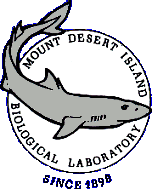


Robert L. Preston, Ph.D.
Professor of Physiology
Comparative and Integrative Physiology Section
Department of Biological Sciences
Illinois State University
Normal, Illinois 6l790-4120
And
Principal Investigator
Mount Desert Island Biological Laboratory
Salsbury Cove, Maine 04672
Phone: 309-438-7933
E-mail: rlpresto@ilstu.edu
RESEARCH INTERESTS:
Osmoregulation in euryhaline fish: We have been studying osmoregulation by the euryhaline killifish (or mummichog), Fundulus heteroclitus, and related species. The amazing little fish can tolerate daily change between freshwater and full-strength seawater. We propose that part of this fish's strategy is to seek regions of intermediate salinity in estuaries (behavioral osmoregulation) which minimize metabolic energy expenditure for osmoregulation. We have a working group that examines the ecology, physiology and molecular biology of these fish as they experience salinity challenge. In addition, we are studying osmoregulation and salinity, thermal and desiccation tolerance by killifish embryos. These embryos are deposited at Spring tides at the high-water margins, and may survive for two weeks (until the next Spring tide) exposed to air. We have shown that immerse embryos are capable of osmoregulation and that they express the ion transporters that function in adult fish (Na/K ATPase, CFTR, etc.). In aerially exposed embryos, heat shock (stress) proteins are expressed. We have also shown that these embryos are tolerant to transient desiccation. We have employed the usual range of molecular techniques (RT-PCR, real-time PCR, microarrays) to study these responses.
Osmoregulation in marine and freshwater invertebrates: A major area of interest is osmoregulation in marine and freshwater invertebrates. Amino acids and especially taurine are critical osmolytes released in cell volume regulatory decrease when cells are exposed to hypotonic medium. The role of amino acid transport systems and osmoregulatory channels is an intense area of interest in many laboratories. I am particularly interested in marine invertebrate tissues since that are excellent models for this process, especially organisms that are euryhaline by nature, i.e. those that live in estuaries and tolerate wide ranging changes in salinity. In an extension of this work, we have also been investigating the nature of osmoregulatory processes in freshwater invertebrates (especially mollusks). We previously conducted basic physiological as well as molecular studies on the nonindigenous zebra mussel, Dreissena polymorpha, and on native freshwater unionid mussels.
Energetics of Membrane Transport: I am a membrane physiologist interested in the mechanisms and energetics of organic solute transport with a special interest in amino acid transport. I have studied transport of amino acids in marine invertebrate tissues as model systems that express sodium cotransport mechanisms in the extreme. Some marine invertebrate tissues maintain amino acid gradients of nearly 1 million fold. We have shown that the Na cotransport mechanism can account for gradients of this size provided more than one Na is transported per amino acid (coupling coefficients of 2 or 3) and the process is electrogenic.
Mechanism of Mercury Inhibition of Membrane Transport Systems: As a extension of the transport studies and as a member of the Center for Membrane Toxicology Studies at Mount Desert Island Biological Laboratory (Salsbury Cove, Maine), I have also been investigating the mechanism of mercury interaction with the taurine transport system in the red blood cells of a marine polychaete, Glycera dibranchiata. We have discovered that the reactive form of mercury in this system appears to be the anionic complex, HgCl3- and that the taurine transport system has some characteristics that resemble an anion channel. Most recently we are attempting to identify and clone this taurine transport system by Xenopus oocyte expression cloning with the ultimate objective of elucidating the molecular mechanism of mercury interaction with this transporter.
D-Amino Acid Transport and Metabolism: Another area of interest is the transport and metabolism of D-amino acids by animal tissues. We discovered some time ago that free D-amino acids occur very commonly in marine invertebrate tissues. D-Amino acids are transported (sometimes via D-stereoselective transport systems) and are metabolized by these tissues. We also have shown that enzymatic racemization (the interconversion of D- and L-amino acids) appears to be the principal means by which D-amino acids are metabolized in marine invertebrates. In recent studies, we have extended these studies to mammalian tissues with rather intriguing preliminary results.
(Click Here for an Abbreviated CV)
********************************
For more information about Mount Desert Island Biological Laboratory, click here:

*******************************
Comparative and Integrative Biology Section
Department of Biological Sciences
Illinois State University

Visit the Cellular and Integrative Physiology Web Page